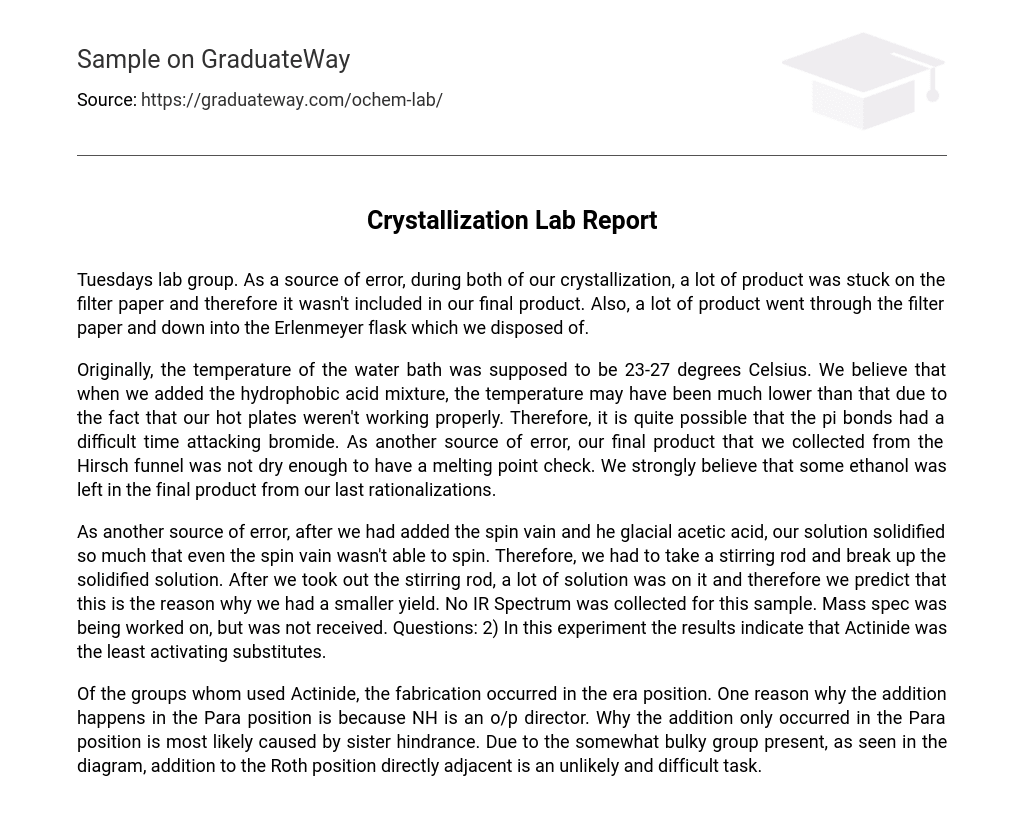Tuesdays lab group. As a source of error, during both of our crystallization, a lot of product was stuck on the filter paper and therefore it wasn’t included in our final product. Also, a lot of product went through the filter paper and down into the Erlenmeyer flask which we disposed of.
Originally, the temperature of the water bath was supposed to be 23-27 degrees Celsius. We believe that when we added the hydrophobic acid mixture, the temperature may have been much lower than that due to the fact that our hot plates weren’t working properly. Therefore, it is quite possible that the pi bonds had a difficult time attacking bromide. As another source of error, our final product that we collected from the Hirsch funnel was not dry enough to have a melting point check. We strongly believe that some ethanol was left in the final product from our last rationalizations.
As another source of error, after we had added the spin vain and he glacial acetic acid, our solution solidified so much that even the spin vain wasn’t able to spin. Therefore, we had to take a stirring rod and break up the solidified solution. After we took out the stirring rod, a lot of solution was on it and therefore we predict that this is the reason why we had a smaller yield. No IR Spectrum was collected for this sample. Mass spec was being worked on, but was not received. Questions: 2) In this experiment the results indicate that Actinide was the least activating substitutes.
Of the groups whom used Actinide, the fabrication occurred in the era position. One reason why the addition happens in the Para position is because NH is an o/p director. Why the addition only occurred in the Para position is most likely caused by sister hindrance. Due to the somewhat bulky group present, as seen in the diagram, addition to the Roth position directly adjacent is an unlikely and difficult task.





